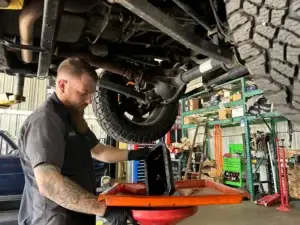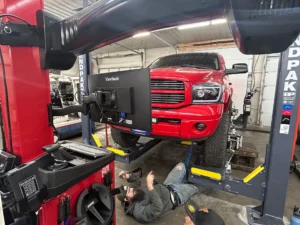A Step-by-Step Guide for Safe and Reliable Vehicle Maintenance
Corroded battery terminals are one of the most common causes of starting issues in vehicles. While it may seem minor, neglecting this buildup can lead to poor electrical connections, reduced battery life, and even vehicle failure. The good news? Cleaning your battery terminals is a simple maintenance task that any vehicle owner can handle with a little preparation and safety know-how.
This guide will walk you through how to safely and effectively clean corrosion from your car battery terminals, backed by automotive best practices.

Why Clean Battery Terminals Matter
Battery terminal corrosion is typically caused by a chemical reaction between battery acid and metal terminals, producing a white, green, or bluish powdery substance. If left unchecked, corrosion can restrict electrical flow and cause:
-
Difficult starts or failure to start
-
Flickering lights or warning signals
-
Charging issues
-
Increased battery drain
Regular cleaning is a proactive step that can extend your battery’s life and prevent costly repairs.
Step-by-Step Guide to Cleaning Battery Terminals
1. Safety First
Before handling any car battery maintenance, prioritize your safety:
-
Wear gloves to protect your skin from acid residue.
-
Use safety goggles to shield your eyes from accidental splashes.
-
Work in a well-ventilated area to avoid breathing in harmful fumes.
2. Disconnect the Battery
Always disconnect your battery before cleaning. Follow this order:
-
Negative terminal first (-): This prevents accidental electrical shorts.
-
Positive terminal second (+).
-
Use an appropriate-size wrench to loosen the bolts and gently remove the cables. Avoid excessive force.
3. Inspect for Damage
Before cleaning, inspect all battery components:
-
Terminals should be free from deep corrosion pitting.
-
Cables and clamps should not show signs of fraying or breakage.
-
Battery casing should be intact with no bulges or cracks.
🔧 Pro Tip: If you notice excessive corrosion or damaged parts, consider replacing them before proceeding.
4. Clean the Corrosion
You have two cleaning options:
DIY Method:
-
Mix 1 tablespoon of baking soda with 1 cup of warm water.
-
Dip an old toothbrush or wire brush into the solution and scrub the corroded areas.
Commercial Cleaner:
-
Available at auto parts stores, these are designed to neutralize acid and dissolve buildup.
After scrubbing:
-
Rinse thoroughly with clean water.
-
Dry completely with a clean microfiber towel.
5. Prevent Future Corrosion
Once clean and dry, apply preventive measures:
-
Dielectric grease: A small dab on each terminal acts as a moisture barrier.
-
Anti-corrosion washers: These sit between the terminal and post, reducing oxidation.
6. Reconnect the Battery
Reconnect your battery in reverse order:
-
Positive terminal first (+).
-
Negative terminal second (-).
-
Make sure all connections are tight and secure.
7. System Check
-
Start your vehicle and let it run for a few minutes.
-
Check that lights, radio, and dashboard displays work as expected.
-
Test the charging system if you suspect ongoing issues.
When Should You Replace Your Battery?
Routine terminal cleaning will extend your battery’s life, but some signs mean it’s time for a replacement:
-
Difficulty starting even after cleaning terminals
-
Battery older than 3–5 years
-
Visible swelling or leaks
-
Frequent jump-starts required
Most auto shops can perform a battery load test to determine its health.
FAQs About Battery Terminal Corrosion
Q: What causes battery terminals to corrode?
A: Corrosion is typically caused by hydrogen gas leakage from the sulfuric acid inside the battery, which reacts with surrounding metal and air moisture.
Q: Can I use Coca-Cola to clean my battery terminals?
A: While some use soda as a DIY fix due to its acidic properties, it can leave sticky residue. A baking soda solution or commercial cleaner is more effective and cleaner.
Q: How often should I clean my battery terminals?
A: Inspect terminals during regular oil changes or every 3-4 months. Clean at the first sign of corrosion.
Q: Will corrosion drain my battery?
A: Yes, it can interrupt proper charging and increase resistance, leading to slow battery drain and inconsistent performance.
Q: Is it safe to drive with corroded terminals?
A: While not immediately dangerous, driving with corroded terminals can lead to vehicle failure at inconvenient times. Address the issue promptly.
Keeping your battery terminals clean isn’t just a task for the mechanically inclined—it’s a foundational skill for every vehicle owner. With just a few tools and simple precautions, you can avoid electrical headaches and improve your car’s performance. Consistent battery care not only saves money but ensures you’re never left stranded due to preventable electrical issues.




